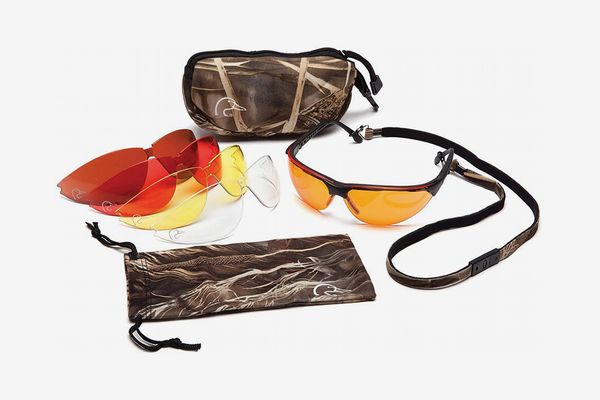
Even if you’ve never heard of EnChroma, you’ve probably seen a video of the brand’s color-blind glasses in action. One of the most popular ones, with over 27 million views, comes from YouTube provocateur Logan Paul. The title quite enthusiastically gets to the point — ”THESE GLASSES CURED MY COLORBLINDNESS!” — and in the 12-minute clip, Paul unboxes and puts on a pair of gray-lensed, Clubmaster–style EnChroma glasses. “Yo, I have the most beautiful bird on planet Earth,” he says, looking at his parrot. “He’s so bright, I see yellow, I see orange, I see blues in the back.” He goes to L.A.’s Griffith Observatory, puts the glasses on, and weeps as the sun starts to set. “I can’t believe I lived my whole life missing out on stuff like this,” Paul says.
It’s a compelling reaction, but what exactly is happening? Does a world of grays and blacks really become Technicolor when a color-blind person puts on these glasses? Luis Gómez Robledo, a professor in the Department of Optics at the University of Granada in Spain, put the glasses to the test last fall. “We received a lot of questions related to the EnChroma videos, where we can see people reacting to these filters, even in some TV programs where people started crying when they used the glasses, and we were quite skeptical,” he explained in an email. Robledo and his colleagues conducted a study with 48 color-blind volunteers and found that the EnChroma glasses don’t cure color-blindness. “None of the participants noticed any improvement to the colors of their surroundings when looking through the glasses,” the researchers wrote in a study, published in October 2018, except for one female patient.
Those who know something about color-blindness (or color deficiency) won’t be surprised, since the condition is a product of genetics, says Dr. Ivan Schwab, clinical spokesperson for the American Academy of Ophthalmology, and as a result, has no known cure. But people are having some kind of reaction to the EnChroma color-blindness glasses, so what’s actually happening?
We consulted Schwab, who gave us the layperson’s version: In the human eye, there are colored-vision cones that receive wavelengths of light and help send them to neurotransmitters in the brain. “Most normal people have three cones” — blue, green, and red — “and with those three different cones, we can blend them together and see millions of different shades of color,” explains Schwab.
If you’re color-deficient, there’s something in that mechanism that doesn’t work quite right, and as a result, your spectrum of visible color is smaller than that of the average person. But color doesn’t disappear completely. “If we have a deficiency in a green, we don’t perceive that color, but we still have the red and the blue, so we still get some different shade for green,” Schwab says. For a color-blind person, the difference between colors might get a little muddy, but their vision isn’t completely monochromatic.
What color-blindness glasses like EnChroma’s do, then, is provide more contrast between the different wavelengths of light, making it easier for the brain to differentiate medium wavelengths from long ones. “The Enchroma filters that we studied are colored filters, when anybody who wears them will perceive a change in the color,” Robledo says. “But a change in color does not mean seeing and distinguishing more colors. They see different color, but they do not see ‘new’ colors because the cones’ responses, optical nerves, and visual cortex are not modified.” Or, as Robledo and his colleagues write in their study, “The use of a colored filter may change the appearance of colors, but will never make color vision more similar to a normal observer’s vision.” It’s like turning up the contrast on a TV, which for some people can be startling enough to trigger an emotional reaction.
So color-blindness glasses don’t “fix” color-blindness, but they can make it easier for people — color-blind or not — to tell colors apart. It should be noted that because there are different types of color-blindness, for some people, these glasses won’t do anything at all. But if you’re interested in trying them, there are plenty of places to start besides the nearly $300 EnChromas. Robledo cites Corning filters, which are used in archery and among those with poor eyesight for a similar effect; he even found in his study that the effect of wearing cheap high-contrast hunting glasses was similar to that of wearing EnChromas.
The Strategist is designed to surface the most useful, expert recommendations for things to buy across the vast e-commerce landscape. Some of our latest conquests include the best acne treatments, rolling luggage, pillows for side sleepers, natural anxiety remedies, and bath towels. We update links when possible, but note that deals can expire and all prices are subject to change.
Every editorial product is independently selected. If you buy something through our links, New York may earn an affiliate commission.









